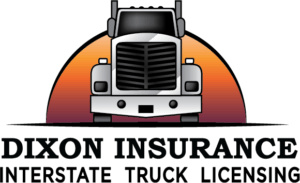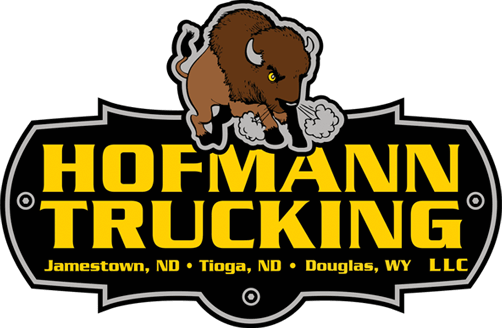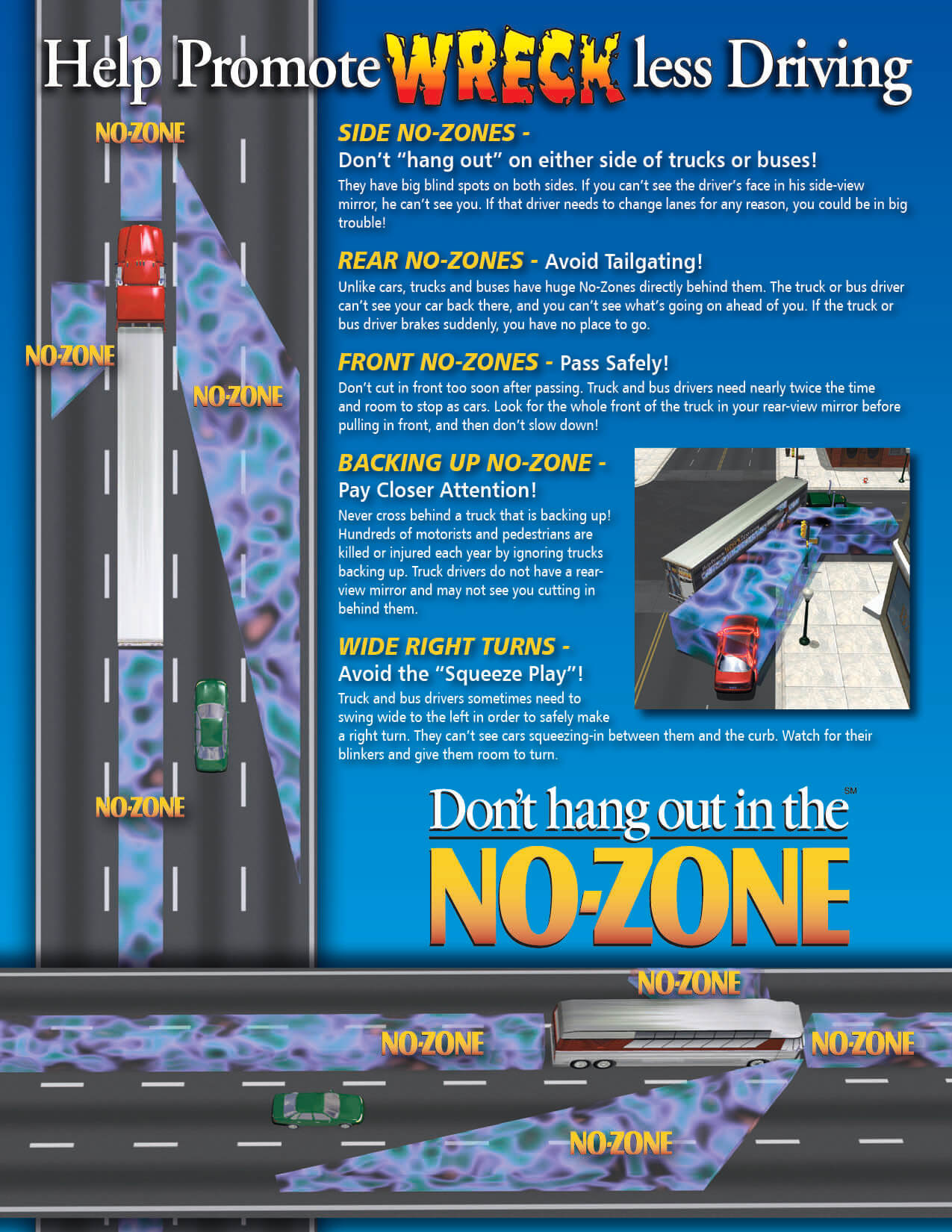Upcoming Events-Volunteers Needed!
Share the Road-No Zone
The North Dakota Motor Carriers Association's Share the Road No-Zone Program is a highway safety program designed to teach high school students how to share the road with large trucks. The program's goal is to reach as many high school students as possible and change driving behavior so that we can save lives.
What is the "No-Zone"?
The "No-Zone" refers to the blind spot areas around large commercial vehicles or the areas where cars are so close to the truck or bus that the driver's ability to stop or maneuver safely is restricted.










Why do I need to know about the "No-Zone"?
Knowing about the "no-zone" areas around large vehicles will help you to steer clear of unsafe situations involving large vehicles and help reduce crashes. There are more than 250,000 crashes involving cars and trucks every year. Many could be avoided by keeping these important points in mind:
- Never cut in front of a large truck. Fully loaded commercial trucks weigh up to 80,000 pounds and take the length of a football field to stop. Most cars weigh only 2,000 pounds.
- Do not linger alongside a commercial truck. There are four major blind spots around commercial trucks where cars disappear from view, and the driver cannot see you.
- Pass quickly to resume visibility and change lanes only when you can see both of the truck's headlights in your rearview mirror. Never pass on the right side of a commercial truck because the right side blind spot runs the length of the trailer and extends out three lanes.
- Stay away from the front and rear blind spots. You must leave 20-25 car lengths between your car and the back of the trailer and four car lengths between the front of the commercial truck and the back of your car.
- If you are following a commercial truck and you cannot see the driver's face in the truck's side mirrors, the truck driver cannot see you.
- Allow commercial trucks adequate space to maneuver because they make wide turns at intersections and require additional space.
